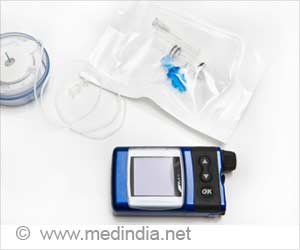The phrase 'the doctor at your doorstep' sounds incredible! But it is true. This is what the ‘MDRF-WDF Chunampet Rural Diabetes Prevention Project’ is about.
The phrase 'the doctor at your doorstep' sounds incredible! But it is true. This is what the ‘MDRF-WDF Chunampet Rural Diabetes Prevention Project’ is about.
Recent studies have proved that diabetes has reached a pandemic stage, not only in urban India , but its prevalence rate in rural areas is also increasing rapidly. As of now, an estimated number of more than 20 million people with diabetes live in rural areas. According to Dr Viswanathan Mohan, a renowned diabetologist, ‘the incidence of diabetes in rural Kerala is more than in its urban areas. This could be due to eating of more rice (which is a staple food of south India), changing life styles leading to a more sedentary existence, and the genetic Indian disposition towards diabetes.’Yet, virtually all diabetes efforts in India are currently focused in the cities.
With this in view, the above project was launched in March 2006 by the Madras Diabetes Research Foundation (MDRF), with the support of World Diabetes Foundation (WDF), Denmark. The project, which is of 4 years duration, led by Dr S.Ravikumar and his team, is being conducted in cluster villages at Chunampet, which is about 100km from Chennai.
In the words of Dr Mohan, one of the principal investigators of the project and President of MDRF, "This project aims to implement the four A test i.e. make diabetes health care available, accessible, affordable and acceptable in rural areas. It aims at addressing prevention of diabetes at all the three levels - primary, secondary and tertiary."
The highlight of the project is the use of a fully equipped Tele-medicine Van as a novel tool to make diabetes health care, including treatment of its complications, accessible to the rural population. With its help, 23449 people (above 20 years of age) from 42 villages have been screened for diabetes and its related complications, especially eye and foot complications. Thus 87.7% of the total population of these villages has been screened within a period of one and a half years. Just for the sake of figures, 970 people had known diabetes and 1114 persons were diagnosed for the first time. 1061 retinal examinations have been done in the telemedicine van. Those identified to have sight threatening diabetic retinopathy are treated free of cost at the main centre. Medicines are not provided free, except in very special cases of type 1 diabetes. But tests and specialized treatments are free. Thus effective strategies in community based diabetic screening programmes in a rural setting have been evolved by involving ophthalmologists of urban areas via telemedicine.
This seems to be a unique example of private public partnership, with the doctors ‘reaching out to the unreached’, and following a structured care recall programme by going back to the people frequently for follow up action.
Advertisement
All these efforts have resulted in a perceptible reduction of glycated haemoglobin (HbA1c) by nearly 2%, which can lead to a risk reduction of 76% in retinopathy and 34% in albuminuria in persons living with diabetes. This would obviously lead to tremendous economic savings.
Advertisement
Source: Shobha Shukla (CNS)








